Following a recent firing incident with a 5.56x45mm IA2 semi-auto carbine in LE training use in Brazil, IMBEL – Indústria de Material Bélico do Brasil has issued an official recommendation note covering two aspects of the weapon’s operation. The first of them refers to the commonly-controversial 5.56x45mm vs .223 Rem ammo use, whose slightly different NATO vs SAAMI chamber forcing cones generate higher-than-ideal chamber pressures in a .223 Rem rifle firing 5.56x45mm rounds. However, both the IA2 rifle and the earlier IMBEL MD-97 are chambered for NATO-standard cartridges, the use of which is specifically recommended in the respective Operations Manual. Nevertheless, the IA2 in both rifle (selective fire) and carbine (semi-auto) versions has been in service with the Brazilian Army and numerous civil and military police forces for several years now with no definite indications that the weapon is strictly “no-go” for .223 Rem.
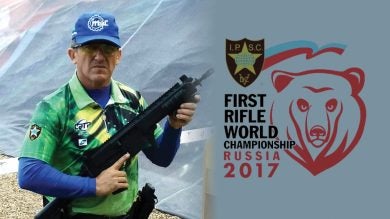
The Brazilian participant in the recent First Rifle World Championship in Russia, Air Force SO Vagner Brum, and the IA2 rifle used throughout the competition.

The Russian-made Barnaul .223 Rem/5.56x45mm ammo made available for all participants.
In the recent First Rifle WordChampionship, held in Russia, Brazil was represented by an Air Force member with an IA2 rifle, and the ammunition used by him throughout the event was the Barnaul .223 Rem/5.56x45mm cartridge (62-grain, FMJ bullet). The ammo boxes read that it was “for civilian rifles with twist rate less than 1 in 9 inches” (the IA2 barrel has a 1-in-10in twist), and closer examination showed that it was, to all extents and purposes, a military-issue round similar to the SS109, whose standards for maximum chamber pressure, muzzle velocity and energy are fully compatible with the IMBEL guns.
However, the .223 Rem vs 5.56x45mm scenario in Brazil is somewhat different. The sole local manufacturer, CBC – Companhia Brasileira de Cartuchos (a.k.a. Magtech), has distinct production and commercial lines for each type, and IMBEL stresses that the use of the military-standard 5.56x45mm cartridge is, in fact, recommended for the IA2.
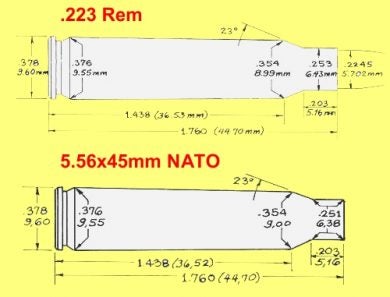
A comparison between the dimensions of the two (SAAMI .223 Rem and NATO 5.56x45mm) cases will reveal no significant variations other than those occasionally conequential from the manufacturing process, but since each cartridge has its maximum internal pressure peak (about 55,000 psi) measured at different points of the barrel (for the .223 Rem, farther from the breech), they may not perform the same way when the rifle is fired. An important variation, however, comes in the actual profile of the respective forcing cone (the tapered area just forward of the chamber) designs, that of the 5.56x45mm being longer and preceded by a wider cylindrical area. Thus, when a .223 Rem bullet leaves the case when fired from a 5.56x45mm chamber it will initially find a tiny gap between its surface and the barrel itself, which may lead to gas leaks, eventually guiding to reduced accuracy and lower gas pressure during the bullet’s travel along the barrel. For semi-auto and automatic weapons, highly dependent on high internal gas pressure, this might also affect the weapon’s functioning, as well.
On the other hand, it should be considered that the brass case’s body expansion at the moment of firing may be enough to fully seal the chamber area and avoid the above-mentioned gas leaks. This, for sure, will long be debated. (TFB readers’ comments are most welcome, as usual!)

Typical CBC 5.56x45mm and .223 Rem cartridge bases showing the different primer fixation methods used, the MIL-standard variation being less prone to slam-fire incidents, for instance. Incidentally, the IA2 uses a spring-loaded firing pin.
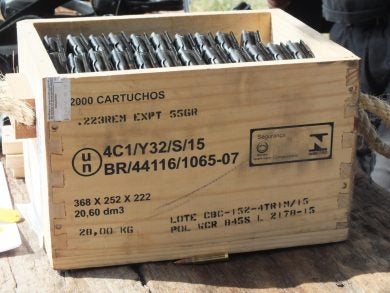
A crate of 2,000 CBC .223 Rem EXPT (55-grain, expanding bullet) cartridges in operational use by Brazil’s FNSP – Força Nacional de Segurança Pública (National Public Security Force).

IMBEL IA2 carbines in recent training use by FNSP agents.
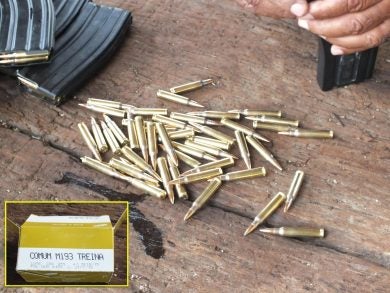
CBC COMUM M193 TREINA (55-gr, FMJ bullet) cartridges in use by FNSP for training purposes.
The second recommendation by IMBEL concerns the method of holding the IA2 when firing, emphasizing that the magazine base should not be used by the supporting hand. This, of course, is generally considered a common advice for any rifle of any caliber, since magazine walls and floor plates, and some upper receiver covers, as well, are generally designed to offer reduced resistance to overpressure generated by the eventual detonation of not-fully-chambered rounds. Consequently, kaboom occurrences of this type will not result in injuries to the shooter’s supporting hand. It’s not a coincidence that the Brazilian manufacturer has turned an earlier optional add-on support grip ahead of the magazine housing into a standard feature for the IA2, a benefit for the many shooters who like that supporting hand position.

Just for the record, this is the floor plate of the 30-round, all-steel magazines made by IMBEL for and supplied with the IA2.
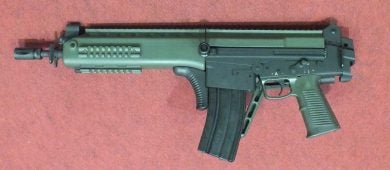
The now-standard auxiliary grip just ahead of the magazine housing, seen here on a selective fire IA2, somehow “invites” most users to hold there.

An IA2 carbine firing (camera caught the chamber open and smoking a little!) in the hands of a FNSP agent using the suggested gun hold… even before the recent IMBEL note was released.

Yep! The old, traditional, supporting-hand-on-handguard position continues in full use by most shooters, yours truly (not in photo!) included.

This picture comes straight from IMBEL’s official advice note. Any doubts?
Higher-res photos here: http://imgur.com/a/XzDCx
An official Brazilian Army video on the IMBEL IA2 rifle:
 Your Privacy Choices
Your Privacy Choices
